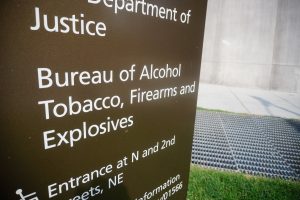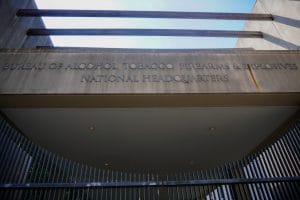The short answer is yes. The longer answer is not as clear.
On Thursday, the ATF published its final rule codifying new standards for what it means to be “in the business” of selling guns and, therefore, need a Federal Firearms License (FFL). The rule points to a number of specific indicators for determining if somebody is dealing guns “predominantly for a profit” as a business. But it also doesn’t draw hard lines on how many guns somebody can sell or how much money they can make before needing a license.
It will probably impact how Americans sell guns, but perhaps not in the way people might first expect.
But, despite the fanfare and claims of the Biden Administration, it doesn’t significantly change the ATF’s position on who needs a license. Nor does it outlaw private sales by unlicensed people at gun shows or elsewhere.
It’s true the rule says there’s no specific number of sales that determines who needs a license. It says it doesn’t matter where a sale takes place. It says renting a table at a gun show could indicate somebody is engaged in the business.
But that’s what the ATF has been saying for a very long time. None of this is new. If you look back at a similar move under the Obama Administration in 2016, you’ll find many of the same talking points at play. One of the big talking points at the time was even those selling a single gun could have to get a license–something repeated in this rule.
“ATF will make clear that whether you are ‘engaged in the business’ depends on the facts and circumstances,” White House Senior Adviser Valerie Jarrett said at the time. “On factors such as: whether you represent yourself as a dealer, such as making business cards or taking credit card statements. Whether you sell firearms shortly after they’re acquired or whether you buy or sell in the original packaging.”
The ATF’s 2016 guide to determining whether you need an FFL hits all the major factors included in the new rule, too.
“Federal courts have identified several factors that can help you determine on what side of that line your activities fall,” the guide reads. “They include: whether you represent yourself as a dealer in firearms; whether you are repetitively buying and selling firearms; the circumstances under which you are selling firearms; and whether you are looking to make a profit. It is important to note that no single factor is determinative, and that the relative importance of any of the factors will vary depending on the facts and circumstances applicable to the individual seller.”
The fact this guidance is now a federal rule does bolster its authority. It also opens it up to legal challenges. Though, it may be a heavier lift for gun-rights activists since it is at least tied to Congressional action.
But it’s unlikely the ATF will arrest the more than 25 thousand people it claims are selling guns in violation of these standards. More prosecutions could come, but they’ll probably come as much as a result of the publicity surrounding the rule than from its actual contents. Similarly, much of the rule’s real-world impact will probably come in the way it casts doubt over who should and shouldn’t get a license. The law-abiding may well opt not to sell a used gun themselves because of the confusion.
The PR blitz is probably the most significant part of all this. When coupled with the vagueness of several of the standards, it could result in people deciding to try and get FFLs before selling guns.
Of course, that runs into several other issues. One, you have to actually be in the business to get an FFL. The ATF will not give you one just because you want to perform background checks while selling guns. So, you’ll have to make the case you are operating a bona fide business.
However, that’s not always easy. Ironically, that’s due to a Clinton-era crackdown on so-called kitchen table dealers. Back then, the ATF said 70% of FFLs weren’t real business and worked to tighten application requirements. As a result, the number of licensed dealers dropped from about 252,000 in 1993 to about 55,000 by 2014.
The two reforms obviously conflict. So, the new rule puts a dark cloud over many Americans without a clear way out from under it. But the 2016 guidance did something similar, and few people headed that call. In fact, the number of licensed dealers was down to 52,910 by 2022.
It’s hard to say how people or prosecutors will react to the rule. The real tell will be if and when more charges are brought for dealing guns without a license and whether judges start issuing broader convictions. That process will take time to play out.
But, since the new rule is so similar to the ATF’s previous guidance, there’s reason to think there won’t be a sea change.







One Response
If the Second Amendment applies to illegal aliens, so will the rest of the Bill of Rights, including the right to vote and every privilege that an American enjoys. Demands to allow illegal aliens voting rights are already pounding from the media. THAT is what the leftists are really after and how they intend to completely take over America, legally, with the acquiescence and cooperation of the American citizens. After that, the Constitution will indeed become a “living, malleable” document.